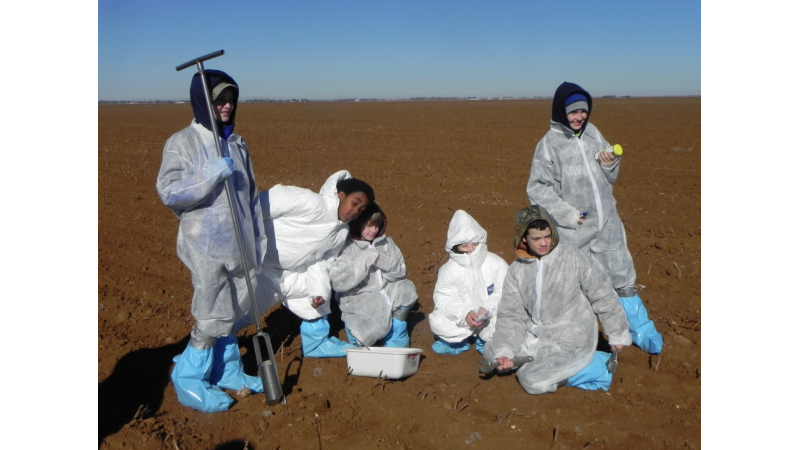 In 2010 the World Health Organization (WHO) issued a report that identified arsenic as a “major health concern” and called for urgent measures to reduce “human exposure to arsenic, particularly in areas with naturally high levels in groundwater.” A group of Texas middle school students (Brett, Lane, George, Chad, Hudson, Jeffrey) and their teacher, Laura Wilbanks, recognized the threat of drinking arsenic-contaminated water in their state in 2013, and wanted to put together a project to take aim at the issue. The Lexus Eco Challenge, a national STEM-themed contest for grades 6 to 12 sponsored by Scholastic, provided the exact opportunity the "Arsenic Arresters" were looking for.
In 2010 the World Health Organization (WHO) issued a report that identified arsenic as a “major health concern” and called for urgent measures to reduce “human exposure to arsenic, particularly in areas with naturally high levels in groundwater.” A group of Texas middle school students (Brett, Lane, George, Chad, Hudson, Jeffrey) and their teacher, Laura Wilbanks, recognized the threat of drinking arsenic-contaminated water in their state in 2013, and wanted to put together a project to take aim at the issue. The Lexus Eco Challenge, a national STEM-themed contest for grades 6 to 12 sponsored by Scholastic, provided the exact opportunity the "Arsenic Arresters" were looking for.
Read on for a Q&A with the winning students and their teacher!
Explain a bit about your project.
The water in our region of the West Texas Panhandle has high levels of arsenic that come from the underground rock layers, as well as from pesticides used many years ago. Our team educated the public about this problem and also discovered a prairie plant that actually hyperaccumulates arsenic in its leaves—leaving the soil and water with lower levels of arsenic.
 How did you and your team choose its topic?
How did you and your team choose its topic?
A family living nearby experienced extreme health problems and it was found that these stemmed from arsenic poisoning. In fact, WHO named arsenic as the leading chemical of concern in the world! These headlines caught our attention and we focused our project on clean drinking water—free from arsenic.
As arsenic in drinking water seems to be an issue that doesn’t get the attention it deserves, did the students have to do a lot of research?
Many people do not want to talk about arsenic poisoning because they feel they’ve been drinking this water all their lives and nothing bad has happened to them yet! It took a partnership with scientists at Texas Tech University and West Texas A&M University to complete research and find a way to test water, plants, and soil.
Why did the Arsenic Arresters consider its topic an important or urgent one?
Arsenic causes cancer of the lungs, bladder, and kidneys, as well as skin lesions. The negative effects of arsenic in drinking water do not just occur in water with extremely high levels like those in Taiwan and Bangladesh. Exposure to high levels like those in West Texas over a long period of time can be just as dangerous to a person’s health. The elevated arsenic levels found in rice and apples have been in the news and this issue is not going away! It must be urgently addressed.
What was the biggest challenge your team faced in putting this project together?
The biggest challenge was finding a university lab with the proper equipment in which to conduct the experiments on the soil and plants. Testing for arsenic is very expensive, so using a lab in a geosciences department was imperative.
What did you enjoy most about your experience with the Lexus Eco Challenge?
Working as a team to solve an important community problem was our favorite part of the challenge. We worked alongside scientists and shared our findings in a poster presentation right next to graduate students showing off their work too! It was so exciting to experience this level of lab work. Meeting Laura Bush and presenting our information to her during a conference was a highlight of our year.
Do you have any plans for the 2014 Lexus Eco Challenge?
Yes, we are excited for this year's Challenge! This year's project involves microbes in agricultural soils of dry land farms and the importance of these living organisms to the health of soil across the nation. With the return of the Dust Bowl in many parts of the drought-stricken Southwest, it is more important than ever to protect the soil and keep it healthy.
Read more about the 2013-2014 winning teams and their inspiring projects here.






